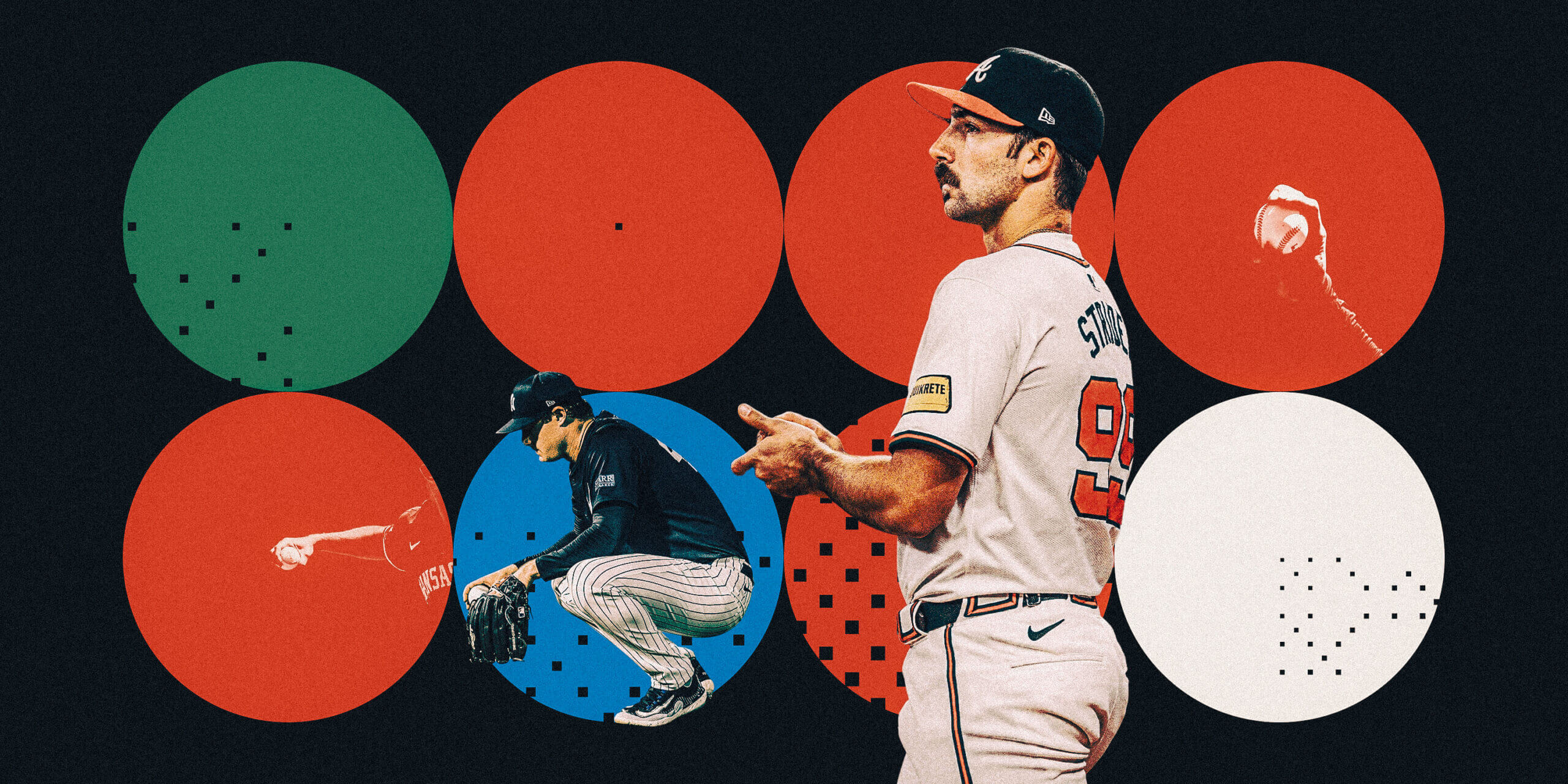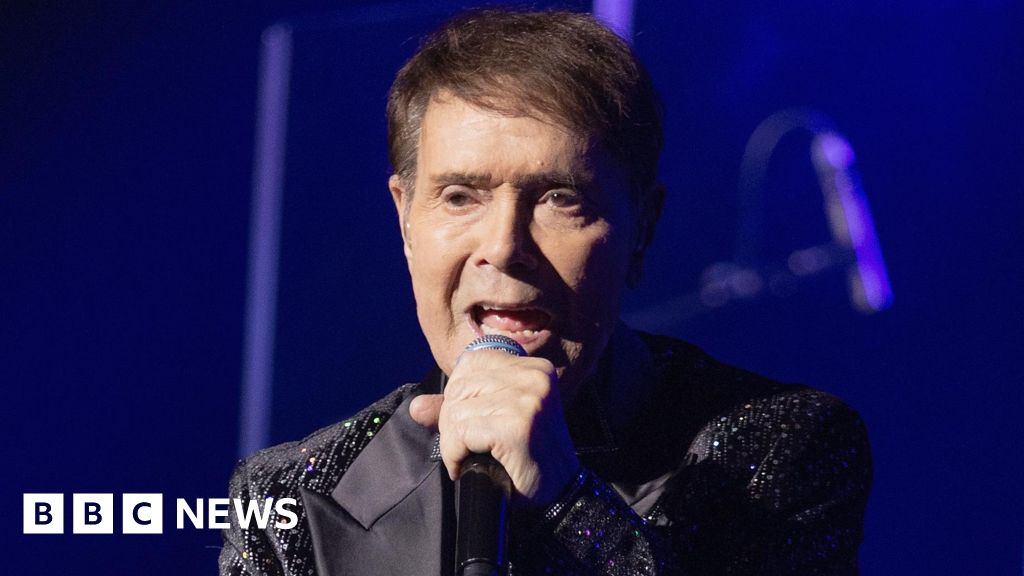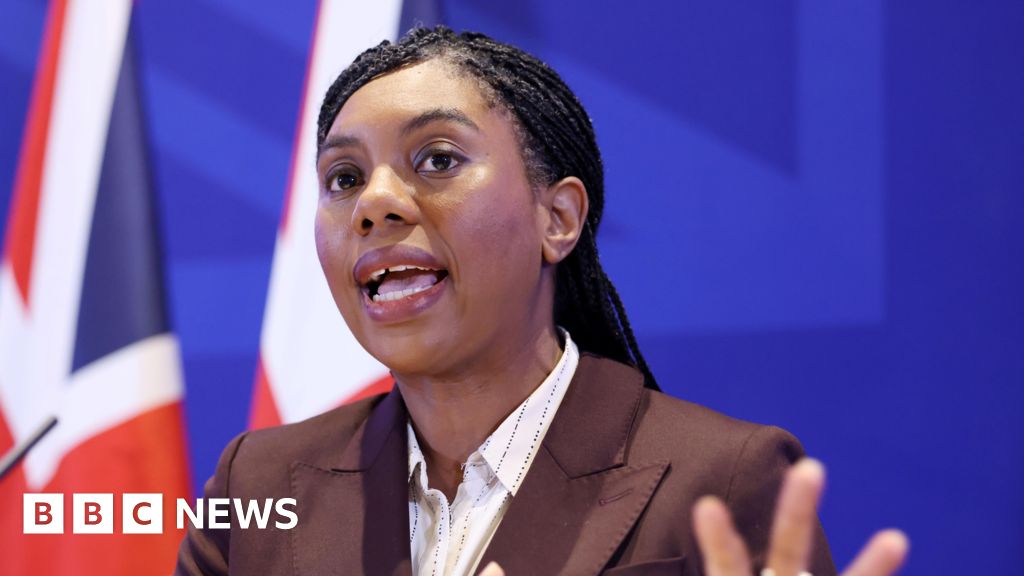
Can MLB save the starting pitcher? The search for solutions to baseball’s ‘existential crisis’
- Sports
- May 16, 2024
- No Comment
- 363
Who’s pitching tonight?
For 100 years, that wasn’t just a casual question. It was the question that defined baseball.
The answer always had a chance to give you goosebumps. Maybe it was Tom Seaver versus Steve Carlton. Maybe it was Sandy Koufax versus Bob Gibson. Maybe it was Pedro Martinez versus Randy Johnson.
They weren’t just a reason to watch. They were the reason to watch. They threw the first pitch of the game. They often stuck around to throw the last pitch of the game. When the stars hold the ball in their hands 100 times a game, from the first minute of a game to the last, that’s where so much of the magic comes from. But now, those nights of pitchers’ duel magic are slipping away.
Ten active major-league starting pitchers have won a Cy Young Award — and nine of them have spent time on the injured list in 2024. The only exception: Baltimore’s Corbin Burnes. But no need to remind you of all the aces who aren’t healthy enough to ace. There are larger forces at work here that are just as big a concern for the people who chart the future of this sport.
The issue is not only the health of the modern starting pitcher, but the role those starters play in the sport these days. Those two things are also connected. Here’s only one recent example:
May 6, Wrigley Field. San Diego Padres versus Chicago Cubs. Theoretically, this was one of those pitching matchups to savor: Yu Darvish, onetime Cubs ace, starting for the Padres versus Justin Steele, a 2023 All-Star and the Cubs’ 2024 Opening Day starter. But was it the stuff of goosebumps? No. The score at the end of five innings was 0-0. Both starting pitchers had allowed only three hits apiece … and, naturally, neither of them was still in the game. Seven relievers ate up the last 25 outs. Just another slice of baseball life in 2024.
True, both starters had spent time on the injured list this season, so they were being handled carefully. But those injuries — and how teams respond to them — are part of a crisis that seems to loom larger over baseball every year.
Should Major League Baseball sit back and let starting pitchers practically disappear? Should it let them recede in prominence, giving away the essential entertainment value they’ve provided for the last century? Or should it act? Should the league step in to halt this trend the way it stepped in only one year ago, when it introduced a pitch clock before the sport arrived at a place where every game dragged toward a midnight finish?
“I think everybody agrees,” says Texas Rangers ace Max Scherzer, a three-time Cy Young winner currently working his way back from (what else?) another injury. “You’ve got to get the starting pitcher back. From an entertainment standpoint, people watch the matchups. That’s a big part of baseball. If you don’t have that matchup, every day is the same.”
Once every day becomes the same, is that when your sport is officially in trouble? Maybe that feels like a question for another day, another season. Except that in reporting this story, The Athletic talked with three longtime baseball executives who used the term “existential crisis” to describe the state of starting pitching.
When one of those executives was asked, as a follow-up question, if he honestly believed that term reflected the depth of this problem, he replied, pointedly: “I do. I think the game is totally broken from that standpoint.”
What could baseball do?
Let’s draw a football analogy. Suppose the analytics gurus in the NFL suddenly decided the best way to win a game was Quarterback by Committee … so every team rolled out four quarterbacks and Patrick Mahomes might never throw a pass in the fourth quarter of any game. How fast do you think that league would change its rules?
“It would outlaw that in about six minutes,” said one of the baseball executives interviewed for this story. All of them were granted anonymity so they could speak candidly about an issue viewed as especially sensitive in their sport.
But in baseball, the league has largely stayed out of the way as teams’ analytics departments took the sport down a similar road: Overload the roster with eight relief pitchers who can throw a baseball 98 miles per hour. Then stop waiting around for the starting pitcher to get tired. Get him out of the game and cue the parade of fireballers out of the bullpen.
The data may show that approach is the most efficient way to get outs. But the best baseball strategy isn’t always the best entertainment strategy. Inside most front offices, that’s not a major concern. But in reporting this story, The Athletic did find a few executives willing to ask why more of their front-office peers weren’t more worried about this trend.
“For the industry, it doesn’t have to be that way,” said one of them. “Can we take a step back and look at our sport from 20,000 feet?”
The league proved, with its rule changes a year ago, that it can act when it sees a crisis approaching. But has the starting pitcher crisis risen to that level? MLB officials declined to comment for this story. However, industry sources tell The Athletic that while the league views this issue as a priority, it is still gathering information, via an extensive study of pitching injuries. So it is likely years away from taking action. And even then, some of those changes would need to be phased in over several years, because the repercussions would trickle down all the way to youth baseball, where the health of young arms is also a growing concern.
In the meantime, however, the brainstorming has already begun. What rule changes could the league consider to help keep pitchers healthier and restore the prominence of the starter? The Athletic has spent the past few months collecting ideas proposed by executives, players and coaching staffs.
They all would address this issue. But they also were all met by so much fierce debate that it illustrated the challenge the league would face to get everyone on board with any of them.
“I think that’s why it’s hard,” said one American League exec. “There are no easy answers. If it were just one thing that we could easily turn a dial … there wouldn’t be a lot of really smart people at the club and league level trying to work on this. But it’s very complicated.”
Here are four potential rule changes you could see someday.
New rule idea: Every starter has to go six innings
Last year, the length of the average major-league start plunged to an all-time low: 15 outs (or five innings) per start. Not even starting pitchers themselves think that’s anything to brag about. So here’s a goal some in the sport would love to shoot for:
How about the starter goes six (or more) in almost every game — barring extenuating circumstances? Is that doable? Why not? That used to happen, you know, and not 100 years ago.
Even 10 years ago, as you can see in the graph above, the percentage of starters who made it through six innings wasn’t that dramatically different from what we saw in the 1970s, a pitching era so golden that it produced 10 Hall of Fame starting pitchers. It’s only in the last five or six seasons that it began to change so significantly. So would it be outrageous to require that every starter get back to that six-inning standard — barring injuries, 10-run blowups, inflated pitch counts or other exceptions that could be negotiated later?
Why “require” it? Ultimately, the league might not push in this direction. But here’s why it might: The best rule changes are the simplest. So instead of a more subtle rule that the league might hope would lead to longer starts, it would take its best, simplest shot and just say: This is now the rule.
What would the penalty be? What would happen if a manager hooked their starter before six — and that starter didn’t meet any of those extenuating circumstances? Good question. The league could say that pitcher had to be placed on the injured list. It could also impose discipline, via fines or suspensions.
Or what about a case like that Yu Darvish-Justin Steele game, in which both starters were being handled more cautiously as they built back from a previous injury? Sorry. The league probably would say that pitcher should still be on the IL working his way back on a minor-league rehab option.
Who would complain? Relief pitchers, obviously, would grumble about almost all of these ideas because this would dramatically change their job description — even if that’s the whole point. But almost every analytically inclined front office would complain just as loudly.
Why, they’d ask, should their teams be forced to push their fifth starter through the sixth inning when they have five unhittable relievers who could rescue him? And how can anyone be sure, they’d wonder, that even those fifth starters would be on board with this?
“It’s really hard to force pitchers to start and go (six innings),” said one exec, “because in my opinion, you’re going to get into all sorts of situations where you ask: Is someone faking an injury? How do they feel? Even if they’re not hurt, they might think: ‘They forced me to stay out there when I wasn’t effective and then I got hurt.’”
So it’s possible, even likely, that a rule requiring six-inning starts would be so harsh, it would gain very little support. If that’s the case, the league could pivot to rules that simply incentivize teams to push their starters deeper into a game. There are several options. Here’s one we’ve written about before.
New rule idea: The “Double Hook”
Unlike most of these ideas, the Double Hook already exists. The independent Atlantic League, a longtime testing ground for MLB rule changes, first experimented with this rule in 2018. Back then, here’s how it worked: When your starting pitcher leaves the game, your designated hitter also has to leave the game (or, at least, go play a position).
But after teams complained, the Atlantic League began tinkering. So by 2023, it used this version: If your starting pitcher leaves the game before the end of the fifth inning, only then does your DH have to leave with him.
What was wrong with the original rule? Would any team really prefer a rule that would keep its best hitter from ever coming to the plate late in a game? Think about all those dramatic walk-off October home runs David Ortiz once hit as the Red Sox DH. It will answer that question.
Why might the Double Hook actually work? You would be surprised by how many people in baseball like this rule. If the idea is to incentivize (but not require) keeping a starting pitcher in the game, what works better than this? Leave your pitcher out there or bench one of your most dangerous hitters? The concept is brilliantly simple.
Who likes it? Some of the most prominent starting pitchers in baseball — Scherzer, Justin Verlander and Adam Wainwright, among others — have been the Double Hook’s biggest public fans. But more front-office minds also seem open to this concept than many others they’ve heard.
“I have been in favor of the Double Hook for a while,” a National League executive said. “I think it would be interesting to have. It adds an extra element of strategy into the game for managers to think about, gives them another decision they have to make in-game, which I don’t think is a bad thing in general.”
Who hates it? The Designated Hitters of North America aren’t sold, for one thing. And one AL executive spoke for his fellow front-office critics when he called it “one of the worst ideas I’ve ever heard.”
“We want close games, right?” that exec said. “We don’t want blowouts. And if you’ve got the Double Hook, you’re going to have a boatload of blowouts. (If you lose your DH) you’re playing a man short, basically, like a soccer team with a player on a red card. Or you attempt to not play a man short, and the game gets out of hand because you’re trying to leave the starter in there for that extra hitter. Then that turns into three or four or five runs, and now you’re done.”
So is there an alternative to the alternative? At this point, everything is on the table. Scherzer, for one, sees no limit to possible incentives you could dangle to keep starters in the game.
“You could sit there and say: You get a free substitution,” Scherzer said. “You could pinch run for a catcher. You could make an instantaneous defensive replacement for an inning, you know what I mean? Keep upping the ante, if the starter goes out and does his job, how much extra stuff would you get as a benefit? So the idea would be if you pull your starter, you’re going to lose a ball game because you pulled your starter early.”

Of the ten active major-league starting pitchers who have won a Cy Young Award, all but the Orioles’ Corbin Burnes have spent time on the injured list in 2024. (Patrick Smith / Getty Images)
New rule idea: No more than 11 pitchers on the roster
Roster limits are another idea that has been tossed out there publicly, even by commissioner Rob Manfred. Two decades ago, teams got along fine with five- or six-man bullpens. So if those in-game rule changes don’t catch on, roster limits might move to the front of MLB’s line.
How would roster limits help starters? With eight relievers hanging out in your bullpen, what would stop a team from using four, five or even six a night? But if the league gradually drops the maximum number of relievers to seven, then six, then possibly even five, the value of a six-inning start — or longer — would skyrocket.
Why do front offices hate this? Many front offices think forcing fewer pitchers to bear the burden of so many innings is a recipe for even more injuries. And this furious debate sums up why there is so much disagreement over how to address this entire pitching crisis.
“There are people on one side of this,” one skeptical executive said, “who want to have less pitchers, make them pitch more … and I just don’t understand how that’s going to work. To me, rested pitchers are probably healthier pitchers. So our positions are totally misaligned with each other. And I’m not sure how to resolve this because we’re not seeing eye to eye at all.”
So why might it still make sense? The small group on the other side sees this so differently. Too many teams, one of those executives said, are ignoring the ripple effects of regularly pulling starters for a fresh reliever at the first opportunity, then mixing and matching relievers every time the data says so.
“You’re not just playing one game,” that exec said. “And you’re not just playing one inning. There are consequences. And the consequences are that you’re going to fry your bullpen by mid-summer, let alone September and October.”
New rule idea: Outlaw the sweeper
Why are so many aces getting hurt? It’s a complicated problem, but let’s think it through.
If you’re a dominating starting pitcher in this era, it probably means you throw harder than the average pitcher. You create more spin and movement than the average pitcher. And you probably have some dominant pitch — or more than one — that most other pitchers can’t throw, or you just added one.
Now draw up the factors most injury experts point to as most likely to cause catastrophic arm injuries: Velocity … check. Spin … check. Throwing pitches that cause the most stress on the human arm … check.
So would MLB be out of line to make it illegal to throw one of those pitches it viewed as hazardous to pitchers’ health? Could it possibly act to ban a pitch like the sweeper, which has been identified as a source of undue stress on the elbow? That may sound radical, but what if MLB’s study of pitcher health recommends the league wipe out dangerous pitches the way it banned home-plate collisions a few years back?
Why a sweeper ban isn’t as extreme as it sounds: One executive said he wouldn’t be shocked if the league actually did ban a pitch or two someday.
“What if they came to the conclusion, empirically, that the sweeper is a dangerous pitch, and it’s leading to a lot of pitching injuries?” he mused. “To me, it’s not crazy that (MLB) would consider outlawing it, because there’s lots of dangerous behavior that is not allowed on the field because it leads to injuries.”
Could the league even target high velocity? If the league is so concerned with pitches it views as dangerous, could it even look to tone down velocity itself? If it can’t agree on other changes that would force pitchers to take their foot off the gas in order to go deeper into games, one idea that has made the rounds is this shocker: Make it illegal to throw any pitch over 94 mph.
Don’t bet on that one happening. But a subtle element of many of these ideas is to motivate pitchers to pitch at less than max velocity. And that’s a volatile topic unto itself.
We mentioned to one pitcher we spoke with that rule changes are being discussed that would incentivize, or even require, pitchers not to throw every pitch at max velocity. He was borderline livid at that whole idea.
“That would be like telling an NFL running back not to run as fast as he can on every run,” he said. “That’s ignoring the competitive side of it.”
He’ll be heartened to know that many baseball executives agree.
“I don’t know what incentive structure we can create,” said one of those execs, “that’s going to actually convince athletes to not try and throw as hard as they can. Because they know with certainty that they will be better pitchers, even for a short amount of time, if they do throw hard.”
He’s not wrong. But is it time for MLB to step in anyway? Is it time for Manfred to tell all those pitchers: We feel your pain — literally. But we can’t let you do it that way anymore because this injury rate is just not sustainable?
In a sport that has always been slow to change, it’s easy to find people who would tell the commissioner: Please stay out of this. But remember that term, “existential crisis”? One executive who used those words says it’s time to heed them. This latest rash of pitching injuries represents more than just bad luck, he said. It’s a warning siren begging everyone to act.
“What if it gets worse?” that exec wondered. “It’s easy to say everything’s fine, and it’s all fun and games, until you look up and the product is truly horrible because no one has enough pitching. So it’s going to take someone to say, ‘All right, listen, guys. We can keep lying to ourselves, but this sport is broken. And we have to change it.’”
Additional reading
- People in the industry came up with solutions for baseball’s starting pitching “existential crisis.” Some of them are extreme.
- Justin Verlander and Max Scherzer, two of the sport’s most prominent pitchers, weigh in on the crisis.
(Top image: Eamonn Dalton / The Athletic; Photos: J. Conrad Williams, Jr./Newsday RM via Getty Images; Matthew Grimes Jr. / Atlanta Braves via Getty Images)
#MLB #save #starting #pitcher #search #solutions #baseballs #existential #crisis









